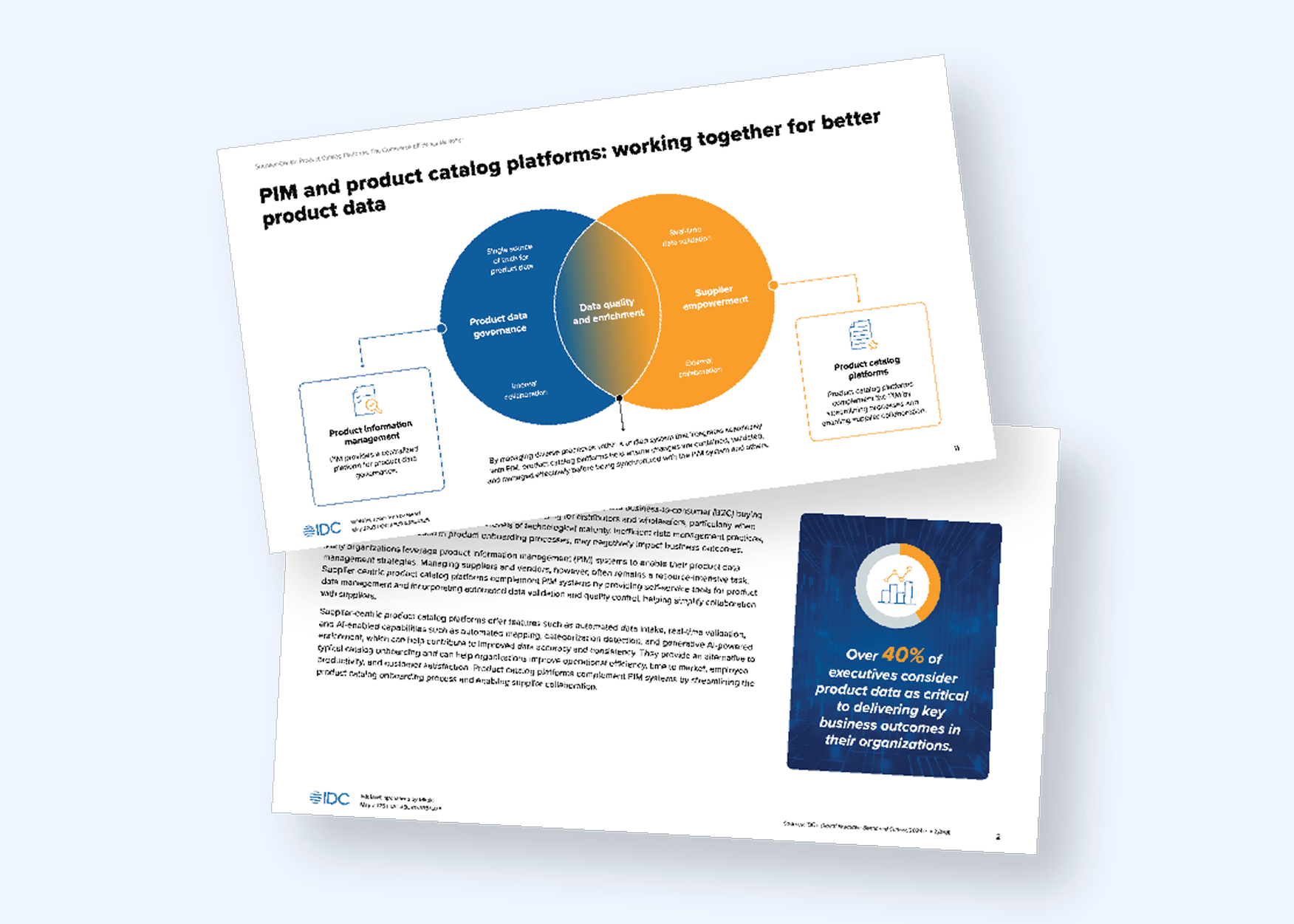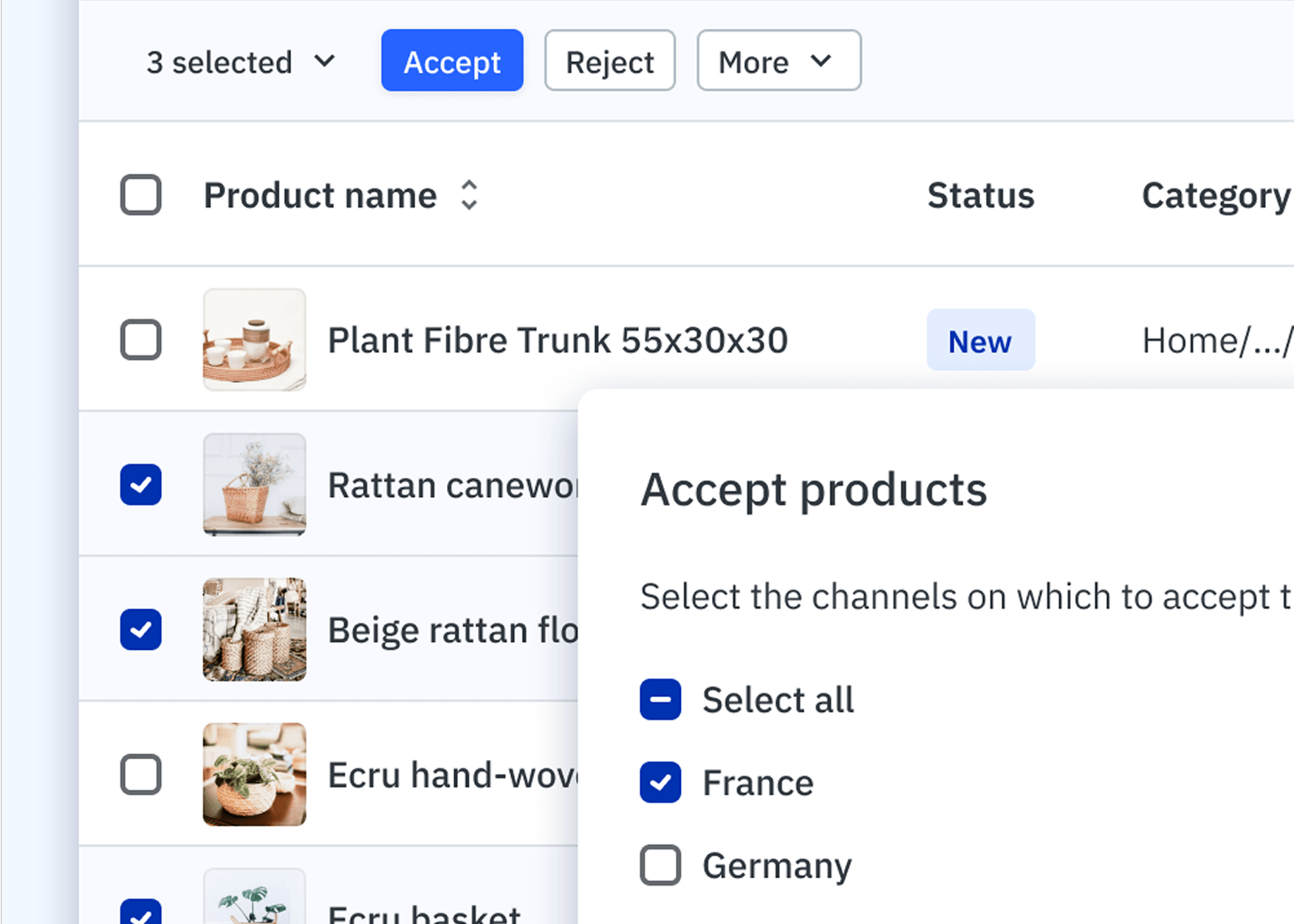The power of supplier-centric product catalog platforms

When supplier catalog management falls short, the results are lost sales, inefficient processes and poor customer experience.
As eCommerce ecosystems grow more complex and product data requirements intensify, many retailers, wholesalers, distributors and buyers struggle to maintain high quality data, risking customer satisfaction and competitive edge.
A new IDC InfoBrief dives deep into core challenges and introduces the value of supplier-centric catalog platforms.
The challenge: Complex data, manual processes and the need for scale
Managing product data across diverse suppliers and verticals is inherently complex. Distributors and retailers often battle with:
Varied product attributes that differ by supplier and category
Manual, error-prone processes that waste valuable time and resources
Lack of standardization and inconsistent technology maturity among suppliers
Little to no real-time feedback to suppliers on data quality
Key benefits: Why shift to a catalog platform?
Manual to automated: Eliminate countless hours of back-and-forth communications and tedious validations. Automation means requirements are communicated once, and processes are streamlined for all suppliers — driving true operational efficiency.
Data control & quality: Accurate, up-to-date product information improves product discoverability, boosts conversion rates and reduces costly returns. With fewer errors, your customers enjoy a better buying experience.
Supplier collaboration & self-service: Empower suppliers with self-service tools and intuitive portals designed for their ease of use. This fosters accountability, accelerates onboarding and ensures data consistency across all channels.
Product Catalog Platform vs. PIM
You may already have a Product Information Management (PIM) system working within your tech stack alongside an ERP, but PIMS are different from, and complementary to, supplier catalog platforms. PIMs and product catalog platforms work together by:
Empowering suppliers to provide and manage data directly
Delivering agile, real-time validation and feedback
Managing processes in one place before pushing data to the PIM
Together, these systems maximize efficiency and data quality — delivering the best of both worlds.
The bottom line: Transformative business benefits
Implementing a supplier-centric product catalog platform yields measurable results, including:
Enhanced operational efficiency: Automation frees your teams from repetitive tasks, letting them focus on strategic initiatives.
Improved employee productivity: Staff can devote more time to value-added activities, not data wrangling.
Faster time to market: Get products live quicker with streamlined data collection and validation.
Greater customer satisfaction: Reliable, consistent product data leads to better buying decisions and happier customers.
Discover how leading organizations are turning product data excellence into a powerful competitive advantage in IDC’s latest study here.



